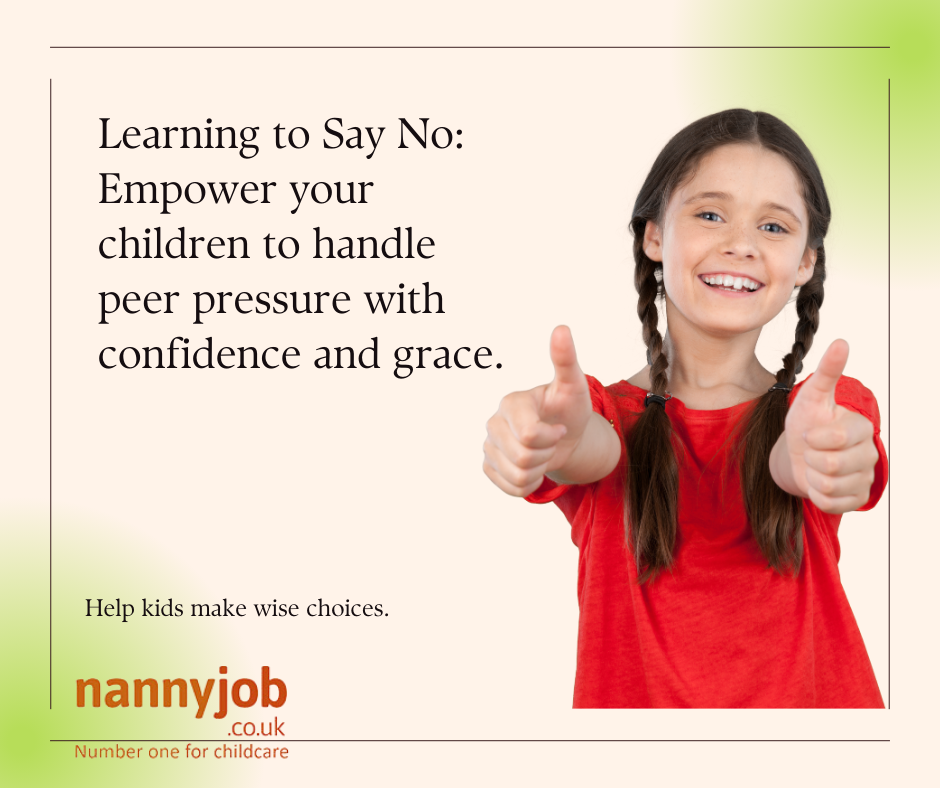Introduction
As children grow, they will inevitably face situations where they feel pressured by peers to make choices that may not align with their values or best interests. Teaching children to say “No” confidently is an essential life skill that empowers them to make their own decisions and resist negative influences. Here’s how parents, nannies, and childcarers can help children learn to say “No” and stand up to peer pressure.
1. Encourage Open Communication
Create an environment where children feel comfortable discussing their thoughts, feelings, and experiences. Encourage them to talk about situations where they felt pressured and help them navigate those experiences. Open communication builds trust and provides a safe space for children to seek guidance.
2. Role-Play Scenarios
Role-playing different peer pressure scenarios can help children practice saying “No” in a safe and supportive setting. Discuss potential situations and brainstorm ways to respond. Practice different responses and emphasize that it’s okay to walk away from situations that make them uncomfortable.
3. Teach Assertiveness
Help children learn to express their feelings and stand up for themselves without being aggressive. Teach them to use “I” statements, like “I don’t want to do that,” or “I feel uncomfortable when…” Assertive communication empowers children to set boundaries and make their own choices.
4. Reinforce Positive Decision-Making
Praise and reinforce positive decision-making when children choose to stand up for themselves or make healthy choices. Highlight the importance of being true to themselves and their values, even when faced with pressure from peers.
5. Model the Behavior
Children learn by observing the adults around them. Model assertive behavior and demonstrate how to handle pressure or conflict calmly and confidently. Show them that it’s okay to say “No” and that everyone has the right to make their own choices.
Conclusion
Learning to say “No” is a valuable skill that can help children navigate the challenges of peer pressure. By fostering open communication, practicing assertiveness, and modeling positive behavior, we can help children feel empowered to make decisions that are right for them.

